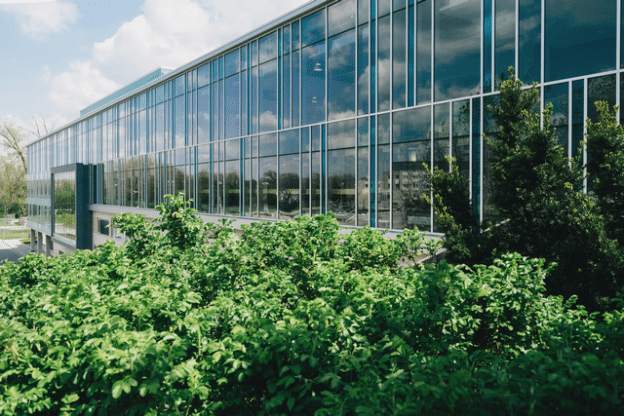A landscape that’s both good-looking and easy to maintain can be challenging. Many business owners find it difficult to get the right balance between these two factors. Hence striking that ideal chord becomes crucial.
Effective lawn and landscape maintenance is essential for achieving this balance. You can enhance your landscape’s look and at the same time work a little less to maintain it by implementing smart strategies.
In this article, we will look at 4 top strategies that’ll make your life easy in maintaining the landscape and aesthetic appeal of it.
Choose the Right Plants
An attractive, low-maintenance landscape begins with choosing the right plants. Your first move should be to consider local climate and soil conditions. Plants that are well suited for your weather conditions will thrive with less attention and maintenance.
Native species are better suited for local conditions and are more tolerant to pests and diseases. This reduces the need for chemical treatments and constant watering.
For example, drought-tolerant plants ideally thrive well under dry climates. On the other hand, shade-loving plants grow well and remain healthy with less maintenance under limited sunlight conditions.
According to the Perkiomen Watershed Conservancy, these plants provide food and habitat for birds, pollinators, and other wildlife. Furthermore, this makes your garden more sustainable.
The next thing you can consider is choosing low-maintenance plant varieties. This can further help you in your landscape care. Hardy plants, like ornamental grasses and creeping thyme, need less watering, trimming, and fertilizing.
These plants look pretty without requiring much maintenance, so you can spend more time enjoying your outdoor living space.
Design with Functionality in Mind
Creating a functional garden layout is important to make the best use of your landscape. A well-thought-out pathway makes it easier for you to guide foot traffic. You can also prevent soil compaction in areas where you plant.
Another smart design move could be to use mulch and ground covers. Mulch stops weeds from growing, maintains and retains the moisture in the soil, and maintains soil temperature. This in turn reduces the need for frequent watering and weeding.
Ground covers like clover or creeping juniper on the other hand help in preventing soil erosion. They make the garden look green, lush, and easy to maintain.
You can also think of hardscaping elements like patios, garden walls, and stones for more options. These elements can turn your landscape into a visually beautiful place with less maintenance required.
Moreover, hardscaping elements create distinct spaces with less maintenance compared to traditional planting beds. This makes your landscape both clean to the eyes and useful for various outdoor activities.
Implement Efficient Irrigation Systems
Drip irrigation systems should be your go-to option if you want to set up an efficient irrigation system. Studies show that drip irrigation can drastically increase crop yields, water savings, and fertilizer efficiency compared to conventional irrigation. You can water directly to the plant roots where it’s most needed with a drip irrigation system. This stops water from evaporating and runoff.
In contrast, sprinkler systems are better suited for those who want to cover larger areas. Additionally, you get an option to adjust the system for different zones. However, they are not as water-efficient as drip systems.
Now, how do you make the best use of it? Automate your irrigation system with timers and smart controllers. This way you can maximize efficiency to the fullest.
Timers can help you set specific water schedules and smart controllers adjust the watering all by themselves according to weather conditions. Moreover, Lifescape Colorado advises that the best way to create a smart irrigation system is to install a weather-based smart controller. This will ensure you do not worry about watering your garden regularly. All in all, you can save both time and water by using this system.
Routine Care and Seasonal Adjustments
Amidst all these, the other important thing that you need to remember is the maintenance. Regular maintenance is a must if you want your landscape to look best and last in the best possible condition.
By trimming the grass to a certain height, and cutting shrubs and trees, you can encourage the healthy growth of plants. Additionally, fertilizing plants is key to keeping them healthy with necessary nutrients
Speaking of seasonal changes, make sure to water regularly, weeding and fertilizing during the summer and spring seasons. During fall, you can start preparing your landscape for the winter by trimming leaves and applying mulch. As discussed earlier, mulch helps the plant roots to stay protected. Research shows that it reduces runoff and erosion, so the soil doesn’t lose its quality.
Winter is the season when there won’t be much maintenance required. However, you need to constantly check for the damages caused due to cold weather.Ultimately, balancing the looks and appeal of the landscape along with the maintenance is key for a healthy and beautiful-looking landscape. You can have a great time enjoying your outdoor space by making the best use of these key strategies.
Kick off your strategy by starting with the right plant selection as per the weather conditions. You need to design your landscape keeping functionality in mind. Also, efficient irrigation systems and automation can make things easy for you. you don’t have to break your sweat for maintenance and keep your landscape healthy.
Finally, have a regular maintenance schedule in place. This way you can honestly address your issues and make sure your garden remains in top condition.

